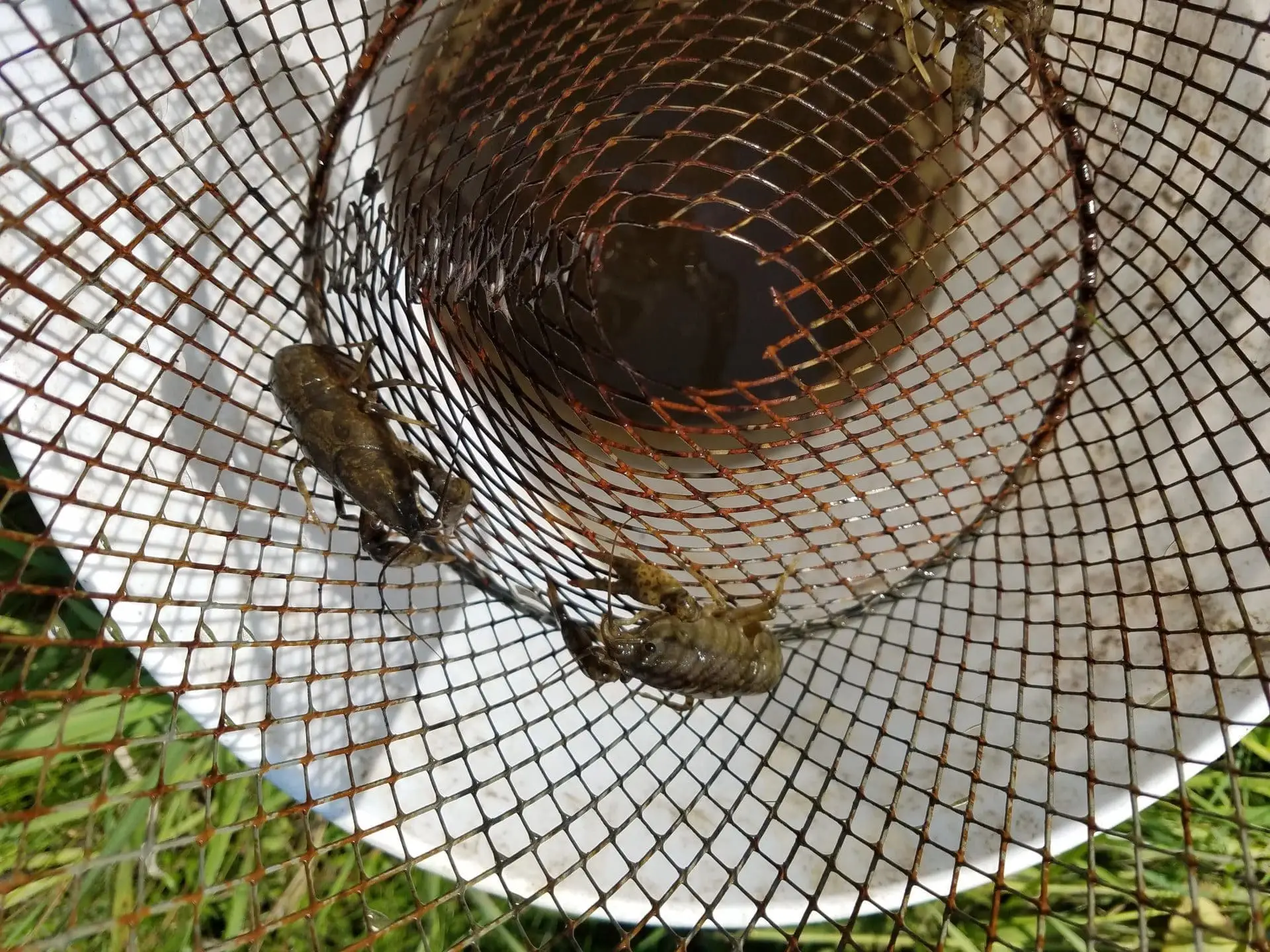We keep adding new livestock to the farm, but this time underwater varieties. After we dug the pond two summers ago, we added some bottom habitat for fish. But the fresh scraped clay surface was rather barren, so we needed to give it a little time to develop some life. We now have frogs and tadpoles, water bugs of all sorts, dragonflies, turtles, snakes, herons, ducks, geese, (and, of course, leeches courtesy of the ducks and geese) all in or around the pond, so it seems like the next phase of stocking should begin.
We set a minnow trap in the lower stream to catch minnows and crayfish. Trapping hasn’t been spectacular, just four minnows and eight crayfish, but we only need a few to get things going. Minnows seem to be picky eaters; they aren’t interested in the bread crusts or bits of sausage that the crayfish go after. I’ve watched a school of about fifty minnows circle the trap, but it is rare for one to enter it. I suppose if we fail to catch enough minnows we could always buy some, but I’d prefer to start with locally-adapted minnows.

The plan is to add bass once we get a good representation of medium sized critters in the pond, but that is probably another year or two away. The minnows and crayfish need a thriving insect and tadpole population; the bass need a thriving minnow and crayfish population. Of course, when we add the bass we’ll have to buy them from a fish hatchery, so maybe the quest for locally adapted minnows is made moot by the imported bass. I don’t have time to fish all the local ponds to catch enough breeding bass, so I suppose there are limits to my localism.
I like what the pond offers the farm, especially when compared to drilling a well. Obviously we get clean water for the livestock with a much simpler extraction method (gravity siphon versus running a deep well pump). But the benefits go beyond that. All sorts of wild birds, reptiles, amphibians, and mammals use the pond too. The pond gives a boost of biodiversity through mixing habitats, so we support a broader spectrum of living things. Even the two legged creatures enjoy flopping into the water on humid summer days and skating around on the ice in the winter. If in the future we can get a few fish dinners out of it, that’s another bonus.

3 thoughts on “Next: Pasture Raised Lobsters”
I just hope the two-legged creatures avoid the leeches! 🙂
They get us sometimes, but they don’t hurt so they are just an annoyance. If we stay moving in the water, that seems to keep them from latching on.
Oh my (I think I’ll stick to the pool)